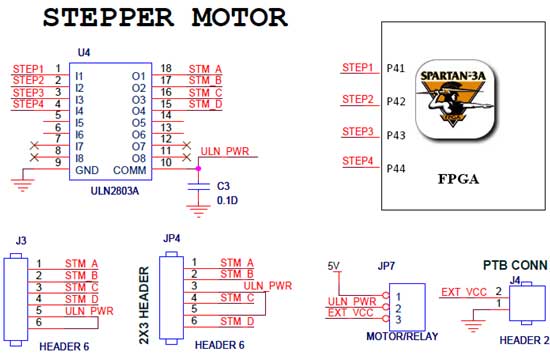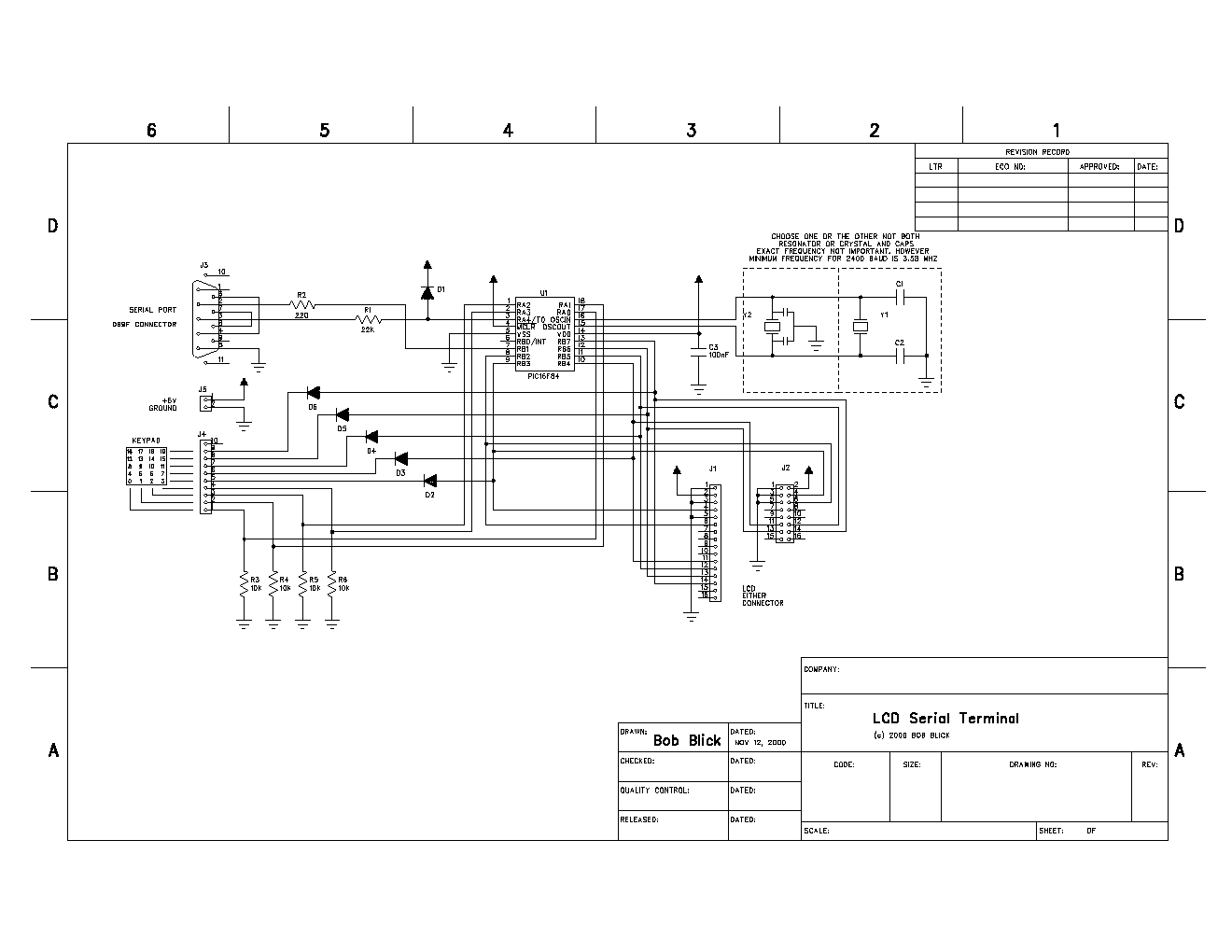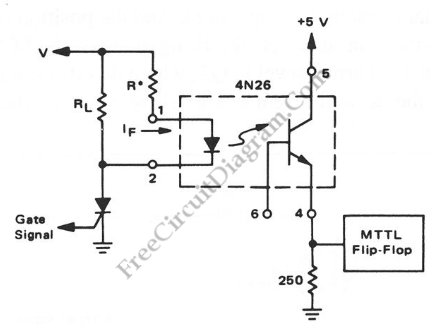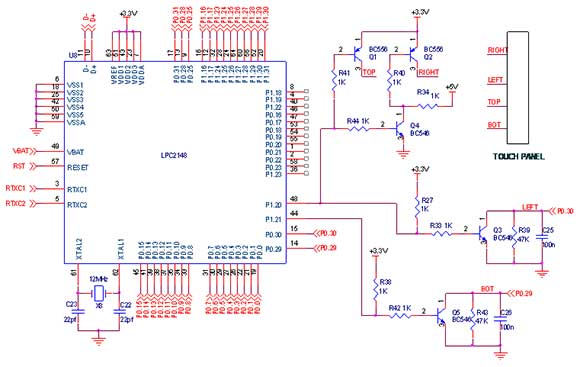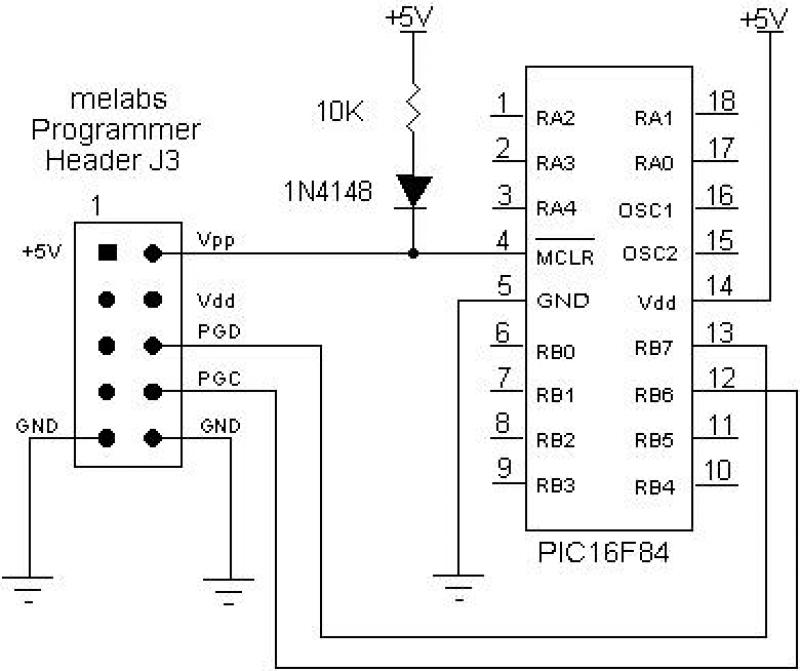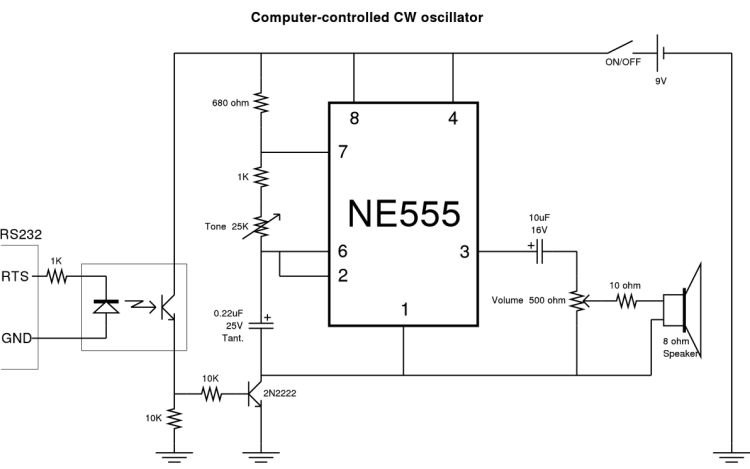
Serial EEPROM Interfacing (AT24C08 with AT89C2051)
.jpg)
Many designers today are implementing embedded systems that require low-cost non-volatile memory. Microchip has addressed this need with a full line of serial EEPROMs, in a variety of memory configurations, using the industry-standard 2- or 3-wire communication protocols. The next circuit diagram is for serial EEPROM interfacing (AT24C08 to AT89C2051).
The circuit diagram for interfacing the AT24C08 serial EEPROM with the AT89C2051 microcontroller illustrates a typical setup for utilizing non-volatile memory in embedded applications. The AT24C08 is an 8Kbit EEPROM that communicates via the I2C protocol, which allows for efficient data transfer using only two wires: the Serial Data Line (SDA) and the Serial Clock Line (SCL).
In the schematic, the AT89C2051 microcontroller serves as the master device, controlling the communication with the EEPROM. The SDA pin of the AT24C08 is connected to a designated I/O pin on the AT89C2051, while the SCL pin is connected to another I/O pin configured for clock generation. Pull-up resistors are typically required on both the SDA and SCL lines to ensure proper signal levels during communication.
Power supply connections must also be established, with the VCC pin of the AT24C08 connected to the positive voltage supply (commonly 5V) and the ground pin connected to the common ground of the circuit. The AT89C2051 microcontroller is powered similarly, ensuring that both devices operate within the same voltage range for reliable operation.
To read from or write to the EEPROM, the microcontroller must send specific commands over the I2C bus, including the device address, data byte, and acknowledgment signals. The EEPROM can store data even when the power is turned off, making it suitable for applications that require data retention without continuous power supply.
This circuit design is particularly valuable in applications such as data logging, configuration storage, and user settings retention in consumer electronics, where low cost and compact size are essential. The simplicity of the I2C protocol enables easy integration into various embedded systems, making the AT24C08 a popular choice among designers seeking efficient non-volatile memory solutions.Many designers today are implementing embedded systems that require low cost non-volatile memory. Microchip has addressed this need with a full line of serial EEPROMs, in a variety of memory configurations, using the industry-standard 2- or 3-wire communication protocols. The next circuit diagram is for serialEEPROMinterfacing (AT24C08 to AT89C2051 🔗 External reference
The circuit diagram for interfacing the AT24C08 serial EEPROM with the AT89C2051 microcontroller illustrates a typical setup for utilizing non-volatile memory in embedded applications. The AT24C08 is an 8Kbit EEPROM that communicates via the I2C protocol, which allows for efficient data transfer using only two wires: the Serial Data Line (SDA) and the Serial Clock Line (SCL).
In the schematic, the AT89C2051 microcontroller serves as the master device, controlling the communication with the EEPROM. The SDA pin of the AT24C08 is connected to a designated I/O pin on the AT89C2051, while the SCL pin is connected to another I/O pin configured for clock generation. Pull-up resistors are typically required on both the SDA and SCL lines to ensure proper signal levels during communication.
Power supply connections must also be established, with the VCC pin of the AT24C08 connected to the positive voltage supply (commonly 5V) and the ground pin connected to the common ground of the circuit. The AT89C2051 microcontroller is powered similarly, ensuring that both devices operate within the same voltage range for reliable operation.
To read from or write to the EEPROM, the microcontroller must send specific commands over the I2C bus, including the device address, data byte, and acknowledgment signals. The EEPROM can store data even when the power is turned off, making it suitable for applications that require data retention without continuous power supply.
This circuit design is particularly valuable in applications such as data logging, configuration storage, and user settings retention in consumer electronics, where low cost and compact size are essential. The simplicity of the I2C protocol enables easy integration into various embedded systems, making the AT24C08 a popular choice among designers seeking efficient non-volatile memory solutions.Many designers today are implementing embedded systems that require low cost non-volatile memory. Microchip has addressed this need with a full line of serial EEPROMs, in a variety of memory configurations, using the industry-standard 2- or 3-wire communication protocols. The next circuit diagram is for serialEEPROMinterfacing (AT24C08 to AT89C2051 🔗 External reference
